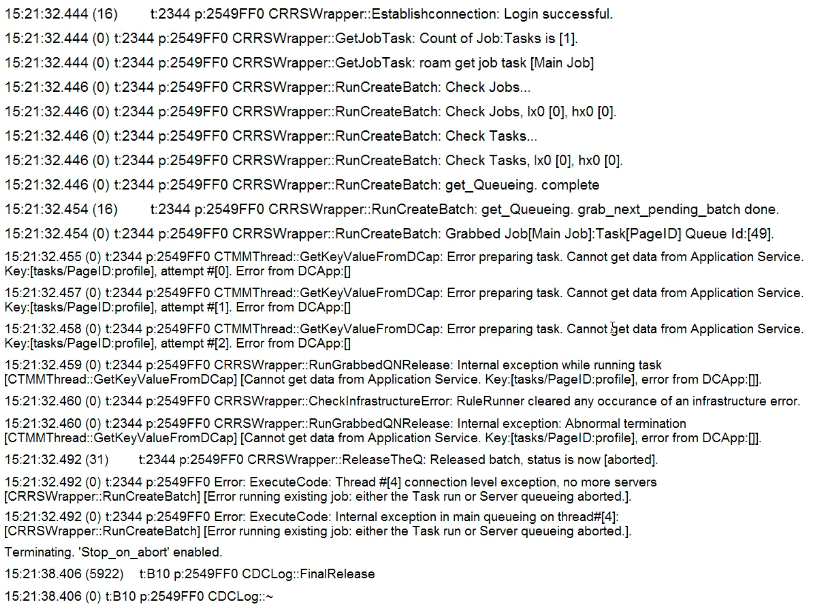IBM Datacap V9.0 Solution Designer C2070-994 Exam Practice Test
An application ingests emails which contain attachments in a verify of formats. The solution designer wants to convert the attachments using the Convert action library.
Convert actions can convert which of the following formats?
Answer : B
The convert actions can convert files from these formats; Microsoft Excel. HTML, Microsoft Outlook, PDF, RTF, Text, Microsoft Word.
Which of the following best describes a scenario to consider when using a distributed IBM Datacap deployment?
Answer : D
Distributed deployments are typical in organizations with these requirements:
References: IBM Redbooks, Implementing Document Imaging and Capture Solutions with IBM Datacap, Second Edition (October 2015), page 79
A solution designer wants to identify pages from a fingerprint based on the relative densities of different regions of the page.
Which action should be called before calling FindFingerprint in order to generate the fingerprint for the page?
Answer : D
Full-page recognition actions, such as RecognizePageOCR_S, RecognizePageICR_C, RecognizePageOCR_A, create a fingerprint that is based on the results of recognition; that is, both geometry and text of the recognized characters, words and lines.
To force creation of a pure recognition-based fingerprint, call SetFingerprintRecogPriority(True) before full-page recognition. This guarantees that any existing geometric fingerprint is ignored, and it applies to OCR_S and ICR_C only.
Example
RecognizePageOCR_S()
CreateTextFile()
SetProblemValue(0.7)
SetSearchArea(0.5)
FindFingerprint(True)copy to clipboard
After the full-page recognition action (RecognizePageOCR_S), the CreateTextFile() action places the recognized values into a Text file that it has set up for the page, and adds the file to the current batch, in the Batches directory of the application.
An administrator added an additional IBM Datacap server for load balancing. The solution designer has been asked to reconfigure the sample TravelDocs application to test the new load balanced configuration.
What two configuration files must be updated with the new location of the application?
Answer : B
The application configuration file, or .app file, stores the paths, connection strings, and other settings of the application.
The application entry in the datacap.xml file, such as TravelDocs, must point to the correct location for TravelDocs.app.
References:
https://www.ibm.com/support/knowledgecenter/en/SSZRWV_9.0.0/com.ibm.dc.develop.doc/dcadg605.htm
https://www.ibm.com/support/knowledgecenter/en/SSZRWV_9.0.0/com.ibm.dc.install.doc/dcain114.htm
A solution designer of an IBM Datacap application, that will integrate with IBM FileNet P8, decides to put sets of fingerprints into different folders.
Which of the following action libraries could be used to set the location of the fingerprints?
Answer : B
Use the FileNet P8 actions to export data to a FileNet P8 repository.
The FileNet P8 actions integrate Datacap applications with the IBM FileNet P8 repository. You run these actions to access the FileNet P8 server, set up document attributes and folders on the server, and upload documents to the server for storage.
FNP8_SetDestinationFolder function sets the destination folder for the documents to be uploaded.
An IBM Datacap solution designer has created an application with the following tasks: VScan, PageID, Profiler, Verify, and Export. They manually tested the application in Datacap Desktop and all functioned properly. They now want to test the same application in Rulerunner. They created a thread in Rulerunner with just the application's background tasks as follows: VScan, PageID, Profiler, and Export.
Unfortunately, running the majority of the same tasks in Rulerunner creates aborted batches. All the batches are aborting on the PageID task. Below is the related error found in the Rulerunner log:

Based on the error given in the Rulerunner log above, what is the cause of the batch aborting the PageID task?
Answer : A
Within IBM Datacap there is a file that contains a list of the available report types that are displayed in report Viewer.
When a new report type is created, what is the name and default location of the file that the new report type must be added to?
Answer : B
The C:\Datacap\RV2\reports.xml file contains a list of the available report types that are displayed in Report Viewer. When you create a new report type, you must add the report type to this file.